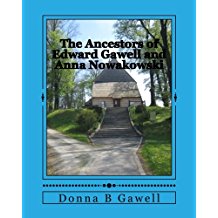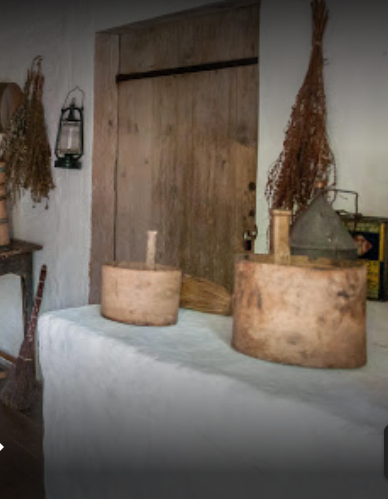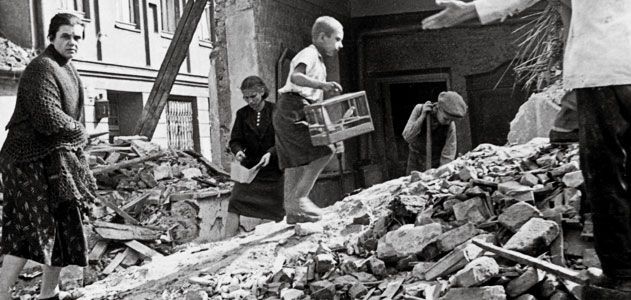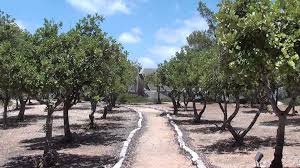By Donna Gawell
(Update in September 2018: This article was written last year after seeing the incredible loss some people experienced in the flooding. Please share with your friends on the East Coast.)
It is the wise person who learns from the mistakes and tragedies of others. Americans were glued to their TVs for weeks after Hurricanes Harvey and Irma witnessing residents drag out mattresses, sofas, and chairs from their flooded homes, and our hearts ached for their loss. Furniture and household items can be replaced, but some of our most precious items might be lost forever.
Family photos, records, and documents are amongst the most difficult to replace. A grandfather’s original naturalization document, parents’ wedding photos, and their own baby pictures might be floating in a massive soup of muddy water. Those of us who don’t live by the coast have our own natural and manmade disasters such as tornadoes and fire that can cause similar destruction.

Your Family’s Heritage and Story
You may be the guardian of your family’s history or just the owner of a few scrapbooks. Some people don’t appreciate their ownership responsibilities, not understanding that they are the guardians of their ancestors’ legacies. The thought that you are the only one who cares about these documents is misguided. The desire to know more about our history is hotwired in some from birth but comes later in others. A thirty year old launching their career while raising a family may show minimal interest. Trust me: your children or maybe their descendants will someday care. We were all there once. It is up to you to consider various ways to save what your descendants will someday treasure. That box of old artifacts you passed down to your son might be thrown in the trash bin during a nasty divorce.
Learn from Professional Genealogists: The Diversification Principle
So, what steps can be taken to avoid this heartbreak? The underlying principle is that your losses will be minimal if you diversify. Just like the wisdom about portfolio diversification from your financial advisor, genealogists will tell you that you should consider at least one or two strategies for more secure preservation. That said, none of these ideas can guarantee your precious items survival if you suffer a fire in the midst of a digital shutdown compliments of Kim Jung Un. These suggestions will give you some assurance that our family treasures and heirlooms items can be preserved and protected.
Share with Your Family
The best advice is to share with others! While most of my siblings and cousins willingly share precious family photos, I have encountered one cousin who is holding on to the items she inherited with a death grip. It is sad we can’t-do anything to change her distorted thinking, but we can proceed with what we all have and ignore those who have an attitude.
Access to a scanner is essential although taking a photo of a document or picture is second best. Sort out the items most precious to you and create a folder with subdirectories to keep scans in order. You can also store the photos sent to you in these folders. Be sure to label them with the first and last names of the items, not just “Grandpa, or mom.” Try to give a date and place.
I have organized small family gatherings of cousins with the sole purpose of sharing what we each have, and these have turned into memorable events. We all walked away benefitting greatly. Try to invite someone who is tech-savvy and has access to a scanner.
For those family and friends who live far away, ask them to send you copies of the photos and documents by email. Of course, reciprocate to those who have offered their treasures. You are on your way to becoming the family historian.
Create digital family history books- for free!



Donna’s Family History Books Available on Amazon
Many people have a desire to make a scrapbook and love the creativity of all the cute details. As a genealogist, I am more practical. Consider this: who is going to inherit this one scrapbook, and who has room or even wants your huge collection? Even if you have just one child, they will likely have at least a few children. You get the point. A digital scrapbook makes so much sense since you can easily produce multiple copies for less than the cost of conventional scrapbooks when you consider the necessary investment in supplies.
I started out using sites like Shutterfly, and there are hundreds of companies that offer a similar service including your local drug store. The problem is that the cost for each book gets out of control at about $34 for a 9×9, 20-page book. Most companies do not offer a significant discount for multiple copies. The books were lovely but became cost prohibitive for my goal of sharing with the family.
That is when I began to use sites like Create Space, Amazon’s self-publishing company. As an author, I had a few self-published non-fiction books on Create Space and saw that it was a relatively easy process, more efficient and less expensive. There are several “print on demand” companies similar to Create Space such as Lulu and Ingram Spark. Use caution in selecting your company as some are more like old-fashioned vanity presses from the past. They want you to make an investment up front−not a good idea! You don’t want to be stuck with a case of books in your basement that cost you hundreds or even thousands of dollars up front. Note: CreateSpace and Kindle Direct Publishing are merging on Amazon in Oct. 2019.
That is the beauty of publishing on demand or POD companies. You create the book, order maybe five very inexpensive proof copies, and then hit the publish key so your family can order their own copies!
The process is easy for anyone familiar with Microsoft Word or Apple Pages. All of these companies offer their professional design services for a fee, but have confidence! You can do this if you take a deep breath and commit a few weeks to the development.
- Write out your family’s story
- Insert photos and documents (family trees, copies of the census, scans of documents, etc.)
- Do a bit of simple formatting:
- Choose an easy to read text type and size (Roman New Times, size 12 is popular)
- Decide on single, double spacing, etc. and indentation (all in paragraph in MSWord)
- Left align -If you are unsure, just google formatting AND self-publishing, and many guides will pop up.
- Use spell check and perhaps a free grammar and writing checker like Grammarly. Your work will look more professional.
- Design your cover- it’s easy! Find a photo of your own or use a free one offered on these sites. You also make decisions about the cover layout and color background. The creator can easily make changes, save it, and come back another day to finish the process.
- Upload your book to the site. Many will provide an ISBN for free.
- Decide on the size of your book and if you want it in color or black and white. I use the 8.5 x 11 and color, but if your photos are all black and white, you might want to choose that option.
- Now comes the trickiest part: pricing. On CreateSpace, you can purchase very inexpensive proof copies and reduced cost author copies of your books. The cost of selling the book to others has a bottom line because Amazon has to make some profit, but you will be able to see what the royalty you as the author will receive from your book before you make the final decision. Because all this work is my gift to the family and future generations, I simply round up the price to the next dollar. You might feel differently.
- Submit the book for review. The company will inspect it for formatting issues and usually reply within 24 hours with suggestions or their approval. Keep in mind that the computer they use doesn’t realize that many of your photos are not high resolution, so ignore those issues. You can keep tweaking your work and resubmitting until you are satisfied.
- Hit the approve key, and you are now an Amazon author!
Off-Site and External Backups
Backup your photos and documents in the cloud, on DVDs and flash drives or memory sticks, etc. A little research on the internet will provide instructions for those of you not familiar with these lifesavers. These backups come with their own limitations as experts warn us that the devices needed to read a DVD or memory card may be obsolete in ten years. Once again: heed the advice to diversify!
Advice for That Dreaded Disaster
There are some emergencies for which you can prepare. Consider the storage location of your photos and documents. Most basements are the worst place for these items because of inevitable mildew issues. Inspect antique clothing periodically and store them in plastic bags.
If you are forced to evacuate and leave many of your precious items behind, consider using your dishwasher as a reasonably airtight storage container. Take out all the racks and put in items that are treasures. Your dishwasher can be locked and should be reasonably waterproof. I would put the items in new zip lock bags and maybe even secure airtight plastic containers first. Might your dishwasher go floating down the street in a flood or burn up in a massive fire? Perhaps, nothing is perfect or 100% guaranteed, but this seems like a prudent alternative to leaving the items exposed on a shelf.
There are countless internet sites with instructions on how to recover photos and other items the owners thought were damaged beyond repair. I watched videos of photo restorations carried out with surgical precision as the items were carefully cut out of the wet plastic sheets and then washed. The efforts seem laborious, especially for people who have so many other emergency tasks in front of them.
Expert Advice for Damaged Photos and Documents
Try to get to flood-damaged photos within two days or they will begin to mold or stick together making saving them much more unlikely. Carefully lift any photos from the mud or dirty water. Remove photos from waterlogged albums and separate those that are stacked together. Be careful not to rub or touch the wet emulsion of the photo surface. Also, remove photos from plastic sleeves from these wet albums right away if possible.
Photos in frames need to be saved when they are still soaking wet, otherwise, the photo surface will stick to the glass as it dries and you will not be able to separate them without damaging the photo emulsion. To successfully remove a wet photo from a picture frame, keep the glass and photo together. Holding both, rinse with clear flowing water, using the water stream to gently separate the photo from the glass.
If you have time and adequate space immediately after the disaster, lay each wet photo face up on any clean blotting paper, such as a paper towel. Do not use newspapers or printed paper towels because the ink may transfer to your wet photos. Change out the blotting paper every hour or two until the photos dry. If possible, try to dry the photos inside, as sun and wind will cause photos to curl more quickly.
After the photo is dried you can remove any mud or dirt by gently rinsing both sides of the photo in a bucket or sink of clear, cold water. Don’t rub the photos and be sure to change the water frequently.
If you don’t have time right away to dry your damaged photos, rinse them to remove any mud and debris. Carefully stack the wet photos between sheets of wax or parchment paper and seal them in a Ziploc type plastic bag. Some experts recommend freezing the photos to inhibit damage. This way photos can be defrosted, separated and air-dried later when you have the time to do it properly. Others believe that freezing will cause small cracks to appear and don’t recommend it.
It is important to note that some historical photographs are very sensitive to water damage and may not be recoverable. Older photographs should also not be frozen without first consulting a professional conservator. You may also want to send any damaged heirloom photos to a professional photo restorer after drying.
Rescued and restored photos can give the owners a little piece of themselves back when so much has been lost. The stories from recent natural disasters should motivate all of us to write that family book and make the preservation of your photos a priority.





























